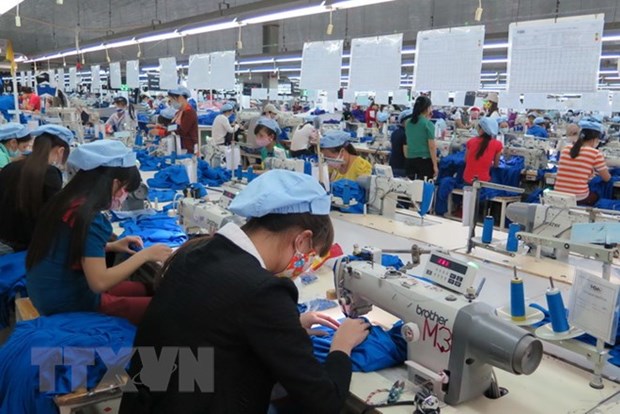Vietnam targets 40 billion USD in textile-garment exports in 2019
 Illustrative image (Source: VNA)
Illustrative image (Source: VNA)
Hanoi (VNA) – The Vietnam Textile and
Apparel Association (VITAS) has set the industry’s export turnover target this
year at 40 billion USD, a 10.8 percent year-on-year increase from 2018.
The industry’s trade surplus is expected to reach 20 billion USD this year, while employment will be ensured and income for 2.85 million workers will be increased, said VITAS.
These targets were based on a successful year in 2018, when export turnover of garments and textiles products reached more than 36 billion USD, marking a year-on-year increase of 16 percent. This level of growth would make the nation one of the top three largest exporters of textiles and garments in the world.
In addition, the Comprehensive and Progressive Agreement for Trans-Pacific Partnership (CPTPP), which came into effect in January 2019, was expected to help the economy grow by 1.3 percent. It should boost export turnover by 4 percent. The textile and garment industry is seen as a key sector with many opportunities to expand the market.
Chairman of VITAS Vu Duc Giang said the signs for orders for 2019 were also very positive. Many businesses already had orders for the first six months of this year and even the whole year.
“The sector has gradually completed the supply chain thanks to increasing flow of capital invested in the textile and dyeing industry, making its products more competitive,” said Giang.
Cao Huu Hieu, Managing Director of Vietnam National Garment and Textile Group (Vinatex), said the sector would have many opportunities to grow along with challenges as the country started to implement the agreement this year.
Hieu said with the strength of the country’s capital, experience, technology and labour force, many foreign-invested enterprises would establish production chains from yarn, fabric and garments in Vietnam.
“If businesses do not invest and improve capacity, it will be difficult for them to compete in the domestic market, especially with products coming in from CPTPP member countries,” he said. “They need to take initiative in producing raw materials and minimising dependence on imported materials to help the industry enjoy the benefits of CPTPP.”-VNA












